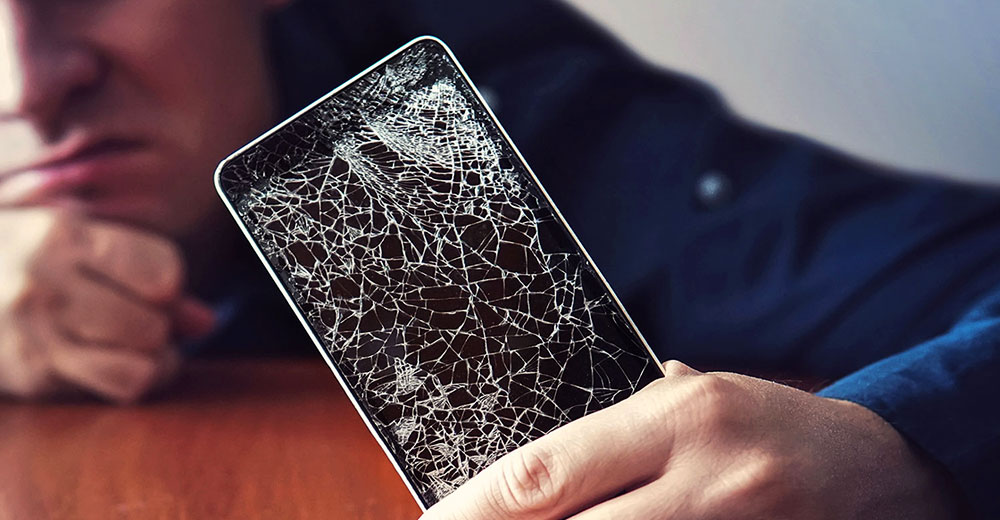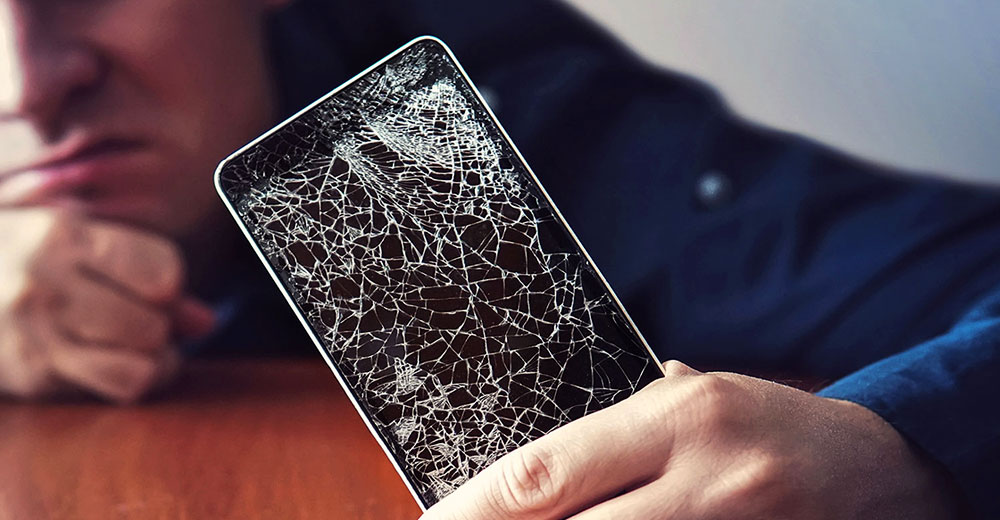It can be expensive to repair cracked or broken screens on mobile devices. However, a few do-it yourself strategies can save you money and allow you to salvage your phone or tablet.
Third-party repair shops replace the glass on a Tablet for around US$100 to US$200 depending on its model. The cost of replacing the touchscreen on a tablet can be between $50 and $75.
It is cheaper to replace the cracked glass by a touchscreen. Online, you can find phone suppliers for as little as $6 to $20. If you do the work yourself, a tablet digitizer replacement can cost $50 or even more.
Once you have the hang of replacing the glass on your phone, it is easy and inexpensive. Tablets require more work due to their larger size and additional components.
If you don’t have a functional workbench, it may be necessary to purchase additional tools. You may need a pry tool for opening phones, small tweezers for handling cables, Torx screwdrivers, flat-head screws, or a precision screwdriver set, depending on the device.
You can also add a variable heat gun or hair dryer to the list to soften any glued phone components. Add scissors, double-sided tape, canned air and work gloves to the list.

Estimate Your Repair Needs
When it comes to repairing cracks in a smartphone screen, the first thing you should do is fix them. Sometimes, the screen itself is not cracked. When you bought the phone, it may have come with a screen protector.
Remove the plastic front bezel. The screen underneath is likely to be intact.
Tablets are usually not affected by this. The so-called screen protectors are actually durable, transparent films.
They can get cloudy or scratched. The film covers help to absorb the shock of items falling on the tablet, reducing the risk that the touchscreen glass underneath will crack.
The old film cover can be easily peeled off and replaced with a brand new one. Problem solved!
Replace with Fix Replace
If the screen is the real culprit, you can solve the issue by choosing from the three options below. It may be possible to repair the screen damage instead of replacing it.
If so, did you accidentally use harsh cleaning fluids to clean your screen or coarse paper toweling? There is a solution for this.
The screen may be cracked, but it is not broken. It could have massive spider cracks as a result of being smashed. Sugru is a commercial product that can be used to repair a cracked tablet or phone screen. If the screen is fully cracked on any device, it’s a good candidate for replacement.
Unsmearing Smudges
You can restore your screen to its original condition with an oleophobic kit if it shows signs of abuse from cleaning or heavy handling. This oil-repellent screen coating protects, adds smoothness and reduces fingerprints.
The coating is a thin layer made of fluoropolymer solids that is similar to Teflon. It is adhered to the glass. The coating kit is available from electronic supply shops and online.
To apply the oleophobic coat, you will need: microfiber cleaning towels, zipper plastic storage bag, 70% isopropyl ethanol.
Follow these steps to get started:
- Clean the surface thoroughly with isopropyl Alcohol. Wipe the screen with a microfiber cloth to dry it.
- Prepare a finger for wiping. Once you begin, the liquid solvent of the oleophobic coat evaporates quickly. Wrap one finger in plastic wrap or sandwich bags. Use this finger for rubbing the coating liquid on the screen.
- Apply 10-15 drops to the surface of the screen. Apply 10 drops of the coating to the entire screen if the phone or tablet has a large screen.
- Spread the coating quickly and lightly by wiping the plastic-covered fingers over the surface.
- Dry the screen with a microfiber cloth. Allow the coating to dry. Don’t touch the screen between 8-12 hours so that the coating can bond to the surface.
- After the bonding period is over, use a microfiber cloth to remove any residue left on the touchscreen.
- Repeat the process at least 2-3 times in order to maximize the durability and performance of your oleophobic film.
There are Two Other Options
There are a variety of remedies available that can be used to fix a small scratch or crack on your smartphone screen. Use a household pencil eraser or a household eraser.
Magic erasers can remove screen scratches within seconds. Apply gentle pressure to a corner of a cleaning pad after moistening it.
The pencil eraser can also be used to remove scratches. Rub the scratch with the eraser left to right for 60 seconds. Rub it up and down 60 seconds.
Dental Care Alternative
Does toothpaste work to fill in cracks? This fix is more mythical, but there are people who swear by it.
As a scratch remover, I think toothpaste is a temporary solution. It is effective on minor scratches and cracks.
This is not a long-term solution for a touchscreen which is used constantly. The paste-over will at best make the cracks appear less noticeable.
Sugru the Rescue
Sugru is a moldable adhesive kit that can be used to repair cracked screens rather than replace them. The product wasn’t created for phone or tablet repairs. It is intended for general repairs, where surfaces need to be bonded together and filled.
Sugru is a great starting point. I’m sure there are other pliable adhesives, but I stumbled upon it by accident.
It can be an effective solution if the cracks are only at the edges of the phone’s or tablet’s screen. For massive cracks, such as those that appear over the whole screen over time (as spider cracks do), it is only a temporary fix.
Follow these steps to get started:
- Use a soft towel to clean and wipe your screen. Take care not to pick any glass that may be loose.
- Transparent adhesive tape can be used to patch the damaged area. It is best to turn on the phone.
- Mark the border of the patch by removing the tape. The patch will not go where you don’t want it.
- Apply the patch in small amounts to the cracks on the screen. Apply the patch very thinly. Add more gradually as required.
Rip and Replace
In the case of more severe damage to your tablet or phone screen, you will only have one option: a full-scale operation. The compact internal design of the device makes it difficult to repair the LCD screen.
To repair the device, you must remove its outer casing. The replacement screen is made easier if it comes with the top frame.
You may need to seal the layers in order to maintain structural integrity and protect against moisture/dust. Use double-sided adhesive tape or sealing pads sized for the device. Use B-7000/T7000 glue to replace the screen of your phone.
Take a huge step to ensure your safety before you start. Purchase and use static wristbands and static guard mats. You will be able to avoid accidentally burning electronic components when disassembling or reassembling devices. The fact that the battery has been disconnected does not guarantee static discharge.
You should first disassemble the device to determine the extent of damage and what screen parts you need to order. Find the LCD model number. You can use this number to search the Internet for a replacement LCD screen.
A label is usually attached to the sensor cable that attaches to the screen. After you have separated the screen from the remainder of the unit, this cable can be accessed. Disconnect the cable connector along the edge of the screen.
Teardown: How to do it
Step 1. Remove back cover of device and remove main battery.
Step 2. Remove any cabling stuck to the cable that is now visible, such as the camera cable. If the cables are still attached, remove them if they have been exposed. After releasing the clasps, these cables will simply slide out from any exposed sockets. These tape-style cables can be held on by adhesive to the frame or parts, so gently tug them out.
Step 3: Unscrew the Phillips or Torx screws that hold the motherboard-containing back frame to the LCD-containing chassis and place the screws in a bowl for safekeeping. Separate the backframe from the chassis, by pulling them apart gently.
Step 4 Remove all other cable assemblies exposed after the separation of parts. Keep visual clues to help you identify which cable goes where. Place them, for example, on the surface of the workbench in the order they were removed. Take photos using a smartphone or digital camera.
Step 6: Remove LCD-containing chassis by removing a second set of screws from the front frame, bezel or glass assembly. The second set of screws should be stored in a separate bowl. Remove all other parts such as the digital camera.
Step 7: Do not touch the LCD screen. By dragging the glass apart and using the heat gun to melt the adhesive, separate the damaged glass from the front bezel. Use gloves because this process involves breaking more glass.
Tip Be careful when using the heat gun to loosen the adhesive. The bezel must remain intact.
Replace the screen
Step 1 : Apply new two-sided tape in areas where the bezel has lost its stickiness. If possible, use the adhesive that is already on your bezel. The tape should not overlap the visible part of the glass.
Step 1: Remove any seals or foam padding. Avoid touching the inside of glass. After assembly, you won’t be in a position to remove the fingerprints.
Step 4: Remount the new digitizer to the bezel. Remove any dust on the LCD or glass using canned air.
Step 5: Attach any missing parts like the camera. Reassemble the chassis and frame in order.
Final Thoughts
It may be necessary to disassemble and reassemble the unit a few more times. Both sets of screws have similar holes. The first set of screws is easily inserted into the wrong hole. It is only after the second set doesn’t fit that you realize it.
When attaching cables, look for solid connections. Make sure that the clasps have been opened. The up position is usually open.
A good assembly is generally characterized by snaps that are firm. Reapply existing metallic tape. Count your screws. If there are any left over, go back.
It is not rocket surgery to replace damaged touchscreens or digitizer panels, but it does require attention to detail. If you follow visual guides or screenshots, it can mean the difference between success and needing to try again.
For visual assistance, visit iFixit. It has many different models of smartphones and tablets, along with detailed instructions on how to use the tools.
